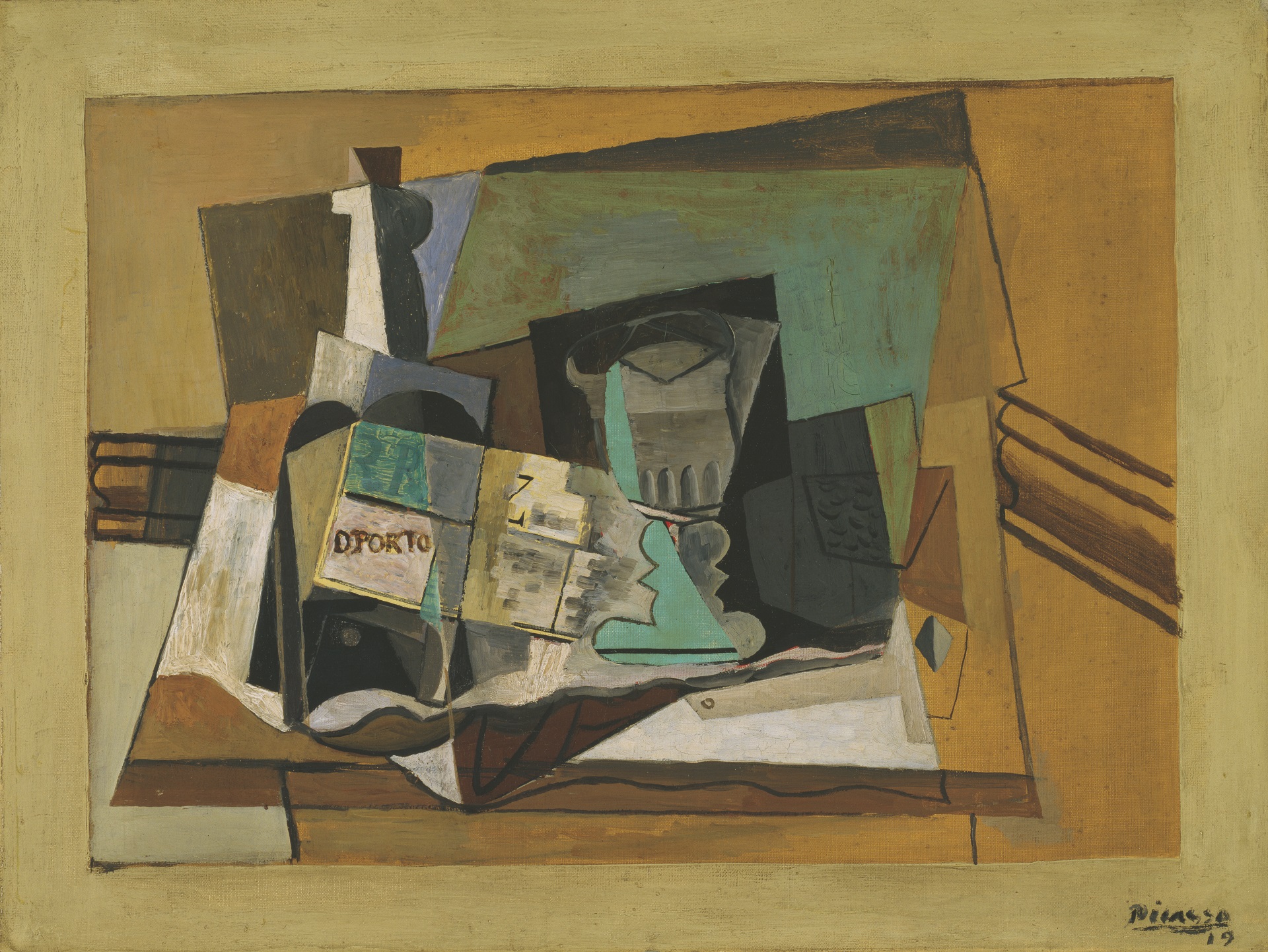art-Picasso.com
Pablo Picasso 1881-1973
©Pablo Picasso - Bottle of Port and Glass 1919
 Bottle of Port and Glass |
From Dallas Museum of Art:
Picasso’s Bottle of Port and Glass from 1919 exemplifies the second period of cubism—synthetic cubism—dating from about 1912, and in Picasso’s case, lasting until his monumental classic style of the 1920s. In synthetic cubism, artists continued to seek the liberation of art from the imitation of nature, addressing instead the basic elements of perception and pictorial notation. The profile of the stemmed glass has almost the quality of a primitive drawing. The pipe and pouch of tobacco are highly simplified, almost schematic. Words and lettering (a characteristic and essential element of the cubists’ probing of reality and image making) are introduced into this composition in a central, rather painterly passage, which seems to hover at center left. Picasso’s ever complex play with levels of reality is apparent in his introduction of an off-white frame or margin, which bears his signature at lower right.